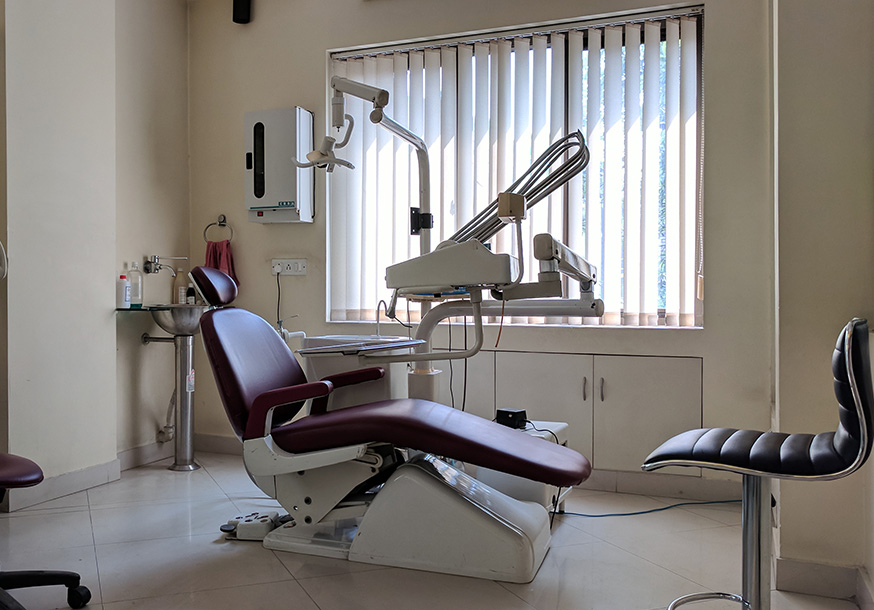Dental crowns, also known as "caps", preserve the functionality of damaged teeth. Crowns may be used to protect a cracked tooth, restore functionality of a tooth with excessive decay, or replace a pre-existing crown. The purpose of a dental crown is to encase a needy tooth with a custom-designed material. Dentists today have a variety of conservative treatment options through which to restore teeth. If possible, these options should be explored and discussed before selecting the full coverage crown.

Crown Materials:
The three predominant choices of restorative materials for the full coverage crowns are:
- Porcelain-fused-to-metal
- All-ceramic (all-porcelain)
- Gold
The material selected is determined by the clinical demands at hand; esthetic demands, strength requirements, material durability and restorative space available.
Porcelain-Fused-to-Metal Crowns
Porcelain-fused-to-metal crowns provide for a strong, durable, and esthetic treatment option. One of the key factors for the esthetic and functional success of this type of crown is ensuring the preparation of the underlying tooth structure provides adequate space for the appropriate thickness of the material selected. Additionally, the artistic skill of the laboratory technologist creating the crown will determine its esthetic appeal.
One consideration in the porcelain-fused-to-metal crown is that these crowns may tend to show the underlying metal or gold margin at the gum line as gums recede over time. Some patients opt for this type of crown, but replace the crown at a later date in order to maintain a higher esthetic benefit. Porcelain-fused-to-metal crowns with an all porcelain collar can eliminate this vulnerability.
All-Ceramic Crowns
The predominant material choice for all-ceramic crowns today is either zirconia, or aluminous materials. They provide a metal-free esthetic option with a number of benefits.
By eliminating the need for the supportive metal core, an esthetic all-ceramic crown can be created with a reduced thickness of material. This makes them a more favorable treatment choice in areas with limited space. Additionally, the elimination of the metal core allows for light transmission through the porcelain for better optical, life-like properties and a higher level of esthetics.
All-ceramic materials continue to evolve in strength and durability, but caution should still be exercised for areas of the mouth requiring heavy function. Continuing research is exploring the significant vulnerabilities of the porcelain systems in such areas.
Gold Crowns
Although not as popular a treatment choice for esthetic reasons, Gold crowns are still indicated in some instances. For example, patients with strong bites and those with parafunctional habits (such as grinding or clenching) might be better served with gold crown. The traditional restorative material can provide stronger support to the remaining healthy tooth structure. Gold crowns offer a level of durability that is appropriate for teeth located in the back of the mouth (such as the molars), where they will not be highly visible. Gold crowns tend to offer greater longevity and require less preparation than porcelain and porcelain-fused-to-metal crowns. When chewing, gold tends to be less abrasive to the opposing tooth than porcelain. This helps to prevent wearing of the teeth.
COMPOSITE AND CERAMIC VENEERS
Dental veneers are custom-designed shells of tooth-like ceramic material that, when applied over the surface of a tooth, can cover worn tooth enamel, uneven tooth alignment or spacing and chips or cracks.
Regardless of what causes unattractive teeth, dental veneers may solve most or even all of your cosmetic dental issues, including:
Worn enamel
Over time, the thin, hard white substance covering your teeth (enamel) may become worn, dulled, and discolored. Such wear and discoloration may be natural or the result of a genetic predisposition; however, it is often a result of your habits (soft drink, tea, or coffee consumption, smoking, medication use, etc.).
Wear and tear
Teeth naturally wear down as people age. Aged teeth are more likely to have chips, cracks or a generally uneven appearance.
Genetics
Certain people may be born with abnormal spacing between the teeth that grows wider as they age.
Uneven teeth
Uneven teeth can result from tooth grinding or general wear and tear.
Porcelain Veneers and Composite Resin Veneers
The two most common materials used in the manufacture of dental veneers are composite resin and porcelain veneers. Both porcelain veneers and composite veneers can be fabricated by a dental technician in a dental laboratory; composite veneers can also be directly fabricated inside your mouth at the dental office.
Dental veneers that are indirectly fabricated - fabricated in a dental laboratory - are bonded to the teeth with various types of resin cement. Of the two options, porcelain veneers are longer lasting and more expensive.